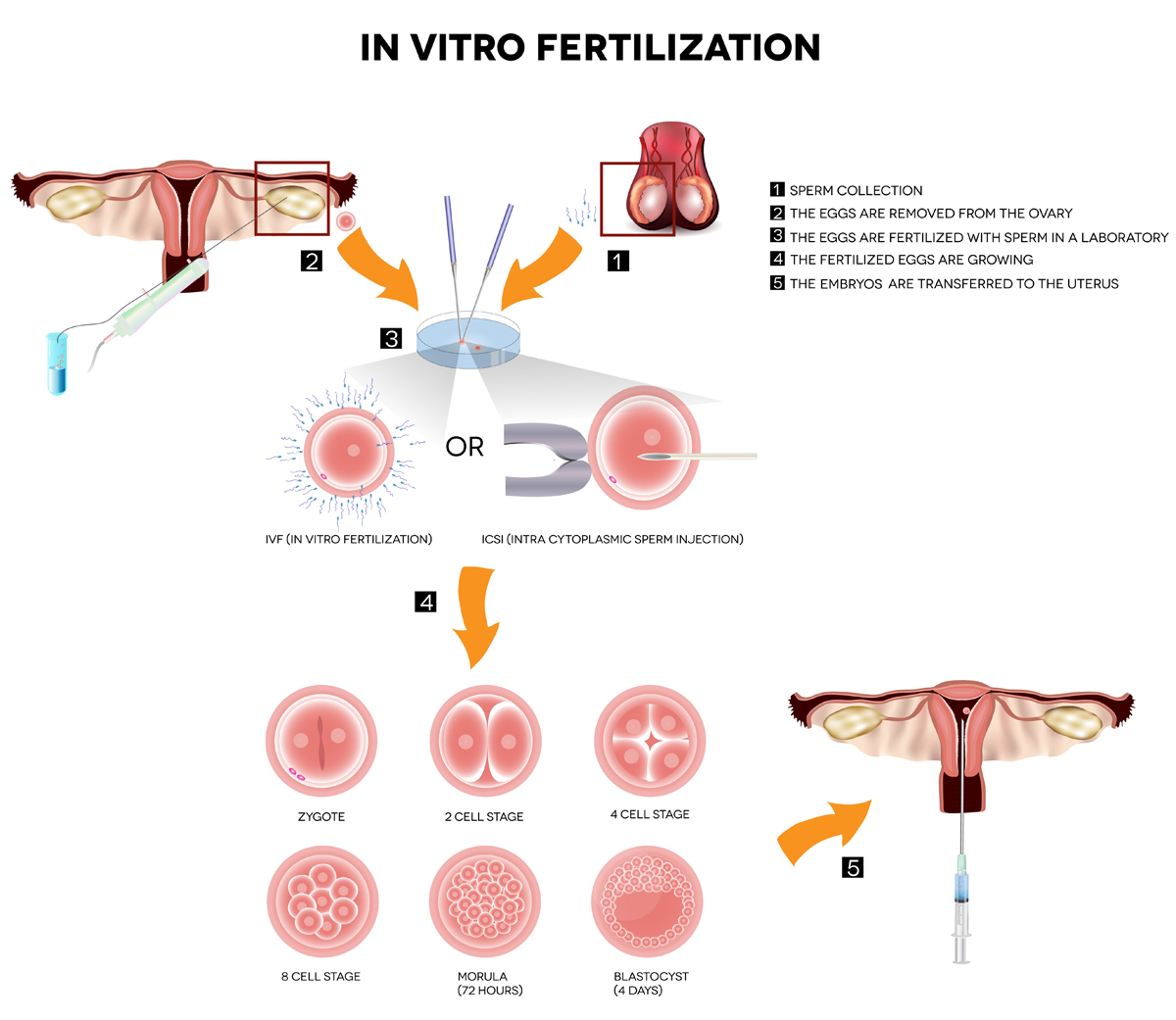Many couples wish for nothing more than to have their own child. But for some of them, their wish to conceive a child has remained unfulfilled, despite prolonged efforts to achieve a pregnancy. But, regardless of how different the underlying causes may be, today there are promising therapeutic options in reproductive medicine.
Counseling: Why is it important?
Since fertility treatment can be an emotionally challenging situation involving potential risks, with no guarantee that the outcome will actually be successful, the couple should, as a first step, seek detailed advice.
One possibility could be to participate in one of the information evenings as offered by the IVF Centers Prof. Zech, for instance. The evening’s topics range from the description of the fundamentals of human reproduction to the analysis of the causes of unwanted childlessness to the possibilities opened up by modern reproductive medicine. The participants have the opportunity to get in touch with medical specialists, ask any questions they may have and voice their personal concerns.
Infertility: What are the causes?
Illnesses, environmental pollutants, ageing are, inter alia, factors which may impair fertility. Unwanted childlessness is often due to a combination of several causes. Therefore, the first step in the treatment of infertility is to identify in detail the reasons for the fertility problems in the woman and the man in order subsequently to decide on individual therapy forms.
To this end, both partners have to undergo a number of examinations. Following the precise diagnosis of the causes, it is possible to decide on the form of treatment that is best suited to the couple’s needs.
Therapy: What is being done?
Besides conventional “artificial insemination”, also known as In Vitro Fertilization (IVF), a technique called “Intra-cytoplasmic Sperm Injection” (ICSI) is a quite common procedure. This method involves the injection of a single sperm directly into each ovum using a very fine needle. After successful fertilization in the laboratory, the embryos are replaced in the woman’s uterus (see Fig.).
The so-called “Intra-cytoplasmic morphologically selected sperm injection” (IMSI) is an advanced technique. The selection of spermatozoa is performed under a microscope with high resolution, enabling a significantly more precise assessment with respect to their shape and structure. The best sperm are isolated and then injected into the cytoplasm of the oocyte.
After the fertilization, the embryo is placed in a special culture medium and kept in the incubator for five days until it has developed to the so-called blastocyst stage (the respective regulatory framework varies from country to country). The embryo is then replaced into the woman’s womb. The day of the embryo transfer corresponds to the point in time when the embryo normally (in natural reproduction) reaches the uterus where it implants itself into the endometrium after having travelled through the oviduct to the uterus.
Success of treatment: What is important?
The chances to achieve a pregnancy are very good, provided that the methods of treatment comply with high medical standards and are performed by an experienced medical team. This implies the use of cutting-edge laboratory techniques (in indicated cases and when permitted by law), such as:
• IMSI – “Intra-cytoplasmic morphologically selected sperm injection”
• Embryo selection at the blastocyst stage
• Safe freezing techniques Vitrification (e.g. in a cryo-cycle, freezing of oocytes “Social Freezing”)
• Genetic analyses of embryos (Pre-Implantation Diagnostics)
Together with optimized stimulation protocols and transfer techniques, very good conditions can be created to help couples realize their long-cherished dream of having a child.
In summary, it can be emphasized that a pregnancy leading to the birth of a healthy child is a miracle of nature. Understanding this wonder down to the tiniest detail is crucial to the success of fertility treatment.
← Home
→ Contact

















